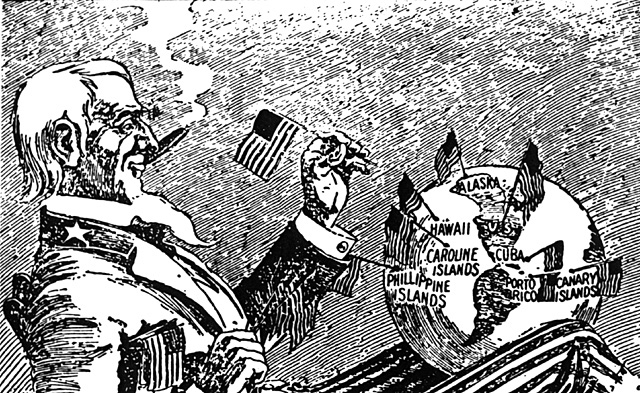On June 12, 1898, Philippine independence was declared in a ceremony in Kawit, Cavite. For the first time, the national flag made by Marcela Agoncillo in Hongkong was raised, while the bands played Marcha National Filipina written by Julian Felipe. Ambrosio Rianzares Bautista wrote and read the Declaration of Independence.
Aguinaldo announced the separation of the Philippines from Spain. However, the independence established for the Filipinos was “under the protection” of America, a clear manifestation that the sovereignty fought for by the Revolutionaries was only as a “protectorate” or a country that remains under supervision of another country.
|
Excerpts from the Declaration of Philippine Independence in Kawit, Cavite Declaration of Philippine Independence in Kawit, Cavite That they are and have the right to be free and independent; that they have ceased to have any allegiance to the Crown of Spain; that all political ties between them are and should be completely severed and annulled; and that, like other free and independent States, they enjoy the full power to make War and Peace, conclude commercial treaties, enter into alliances, regulate commerce, and do all other acts and things which an Independent State has a right to do…. And, lastly, it was resolved unanimously that this Nation, already free and independent as of this day, must use the same flag which up to now is being used, whose design and colors are found described in the attached drawing, the white triangle signifying the distinctive emblem of the famous Society of the ‘Katipunan’ which by means of its blood compact inspired the masses to rise in revolution; the three stars, signifying the three principal Islands of this Archipelago—Luzon, Mindanao and Panay where this revolutionary movement started; the sun representing the gigantic steps made by the sons of the country along the path of Progress and Civilization; the eight rays, signifying the eight provinces—Manila, Cavite, Bulacan, Pampanga, Nueva Ecija, Bataan, Laguna, and Batangas—which declared themselves in a state of war as soon as the first revolt was initiated; and the colors of Blue, Red, and White, commemorating the flag of the United States of North America, as a manifestation of our profound gratitude towards this Great Nation for its disinterested protection which it lent us and continues lending us. — Source: Declaration of Philippine Independence, 12 Hunyo 1898, sa Sulpicio Guevara (ed.), The Laws of the First Philippine Republic (The Laws of Malolos), 1898-1899 (Manila: National Historical Commission, 1972), pp. 204, 205-206. |
Succeeding events following the declaration of independence have clearly shown why indeed there was no independence to begin with.
The Treaty of Paris was signed and effectively granted the transfer of the Philippines to the US. The Philippines was sold for 20 million dollars. US imperialists were pleased with the provisions of the Treaty of Paris. For such an amount, Spanish colonialists sold the “rights” to occupy the Philippines to the US. This would help fulfill the aspirations of American economic interests to get access on the abundant natural resources, cheap labor, and market of the Philippines. On the military front, the US also fulfilled its goal of using the Philippines as its base of operations towards turning the Pacific Ocean into the “American Lake” and to occupy China and elsewhere in Asia.
The “Benevolent Assimilation” proclaimed by US President William McKinley explicitly declared the intention of America to exercise its sovereignty over the Philippines. This meant that they would be controlling the government and economy of the country. — From History of the Filipino People – Challenges and Responses to Nationahood, IBON Social Studies book for Grade 6, 2015, pages 60-61,65-66




